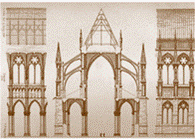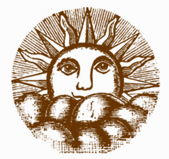The Compasses
|
|
Those Brethren who delight to trace our emblems to an astronomical origin, find in the compasses a symbol of the sun, the circular pivot representing the body of the luminary, and the diverging legs his rays. In the earliest rituals of the eighteenth century, the compasses are described as a part of the furniture of the Lodge, and are said to belong to the Master. Some change will be found in this respect in the ritual of the present day.
|
|
The word is sometimes spelled and pronounced compass, which is more usually applied to the magnetic needle and circular dial or card of the mariner from which he directs his course over the seas, or the similar guide of the airman when seeking his destination across unknown territory. Read more: The Square |
To be upright and virtuous

One of the laws, uttered by God’s voice, and speaking through every nerve and fiber, every force and element, of the moral constitution He has given us, is that we must be upright and virtuous; that if tempted we must resist; that we should govern our unruly passions, and hold in hand our sensual appetites. And this is not the dictate of an arbitrary will, nor of some stern and impracticable law; but is part of a great firm law that binds the Universe together; not the mere enactment of arbitrary will; but the dictate of Infinite Wisdom.
Morals and Dogma
Morals and Dogma
The Compasses, our passions and desires

As the Holy Book
gives us Light on our duties to God, and the Square illustrates our duties to our neighborhood and brother, so the Compasses give that additional light which is to instruct us in the duty we owe to ourselves - the great, imperative duty of circumscribing our passions, and keeping our desires within due bounds.
"It is ordained," says the philosophic Burke, "in the eternal constitution of things, that men of intemperate passions cannot be free; their passions forge their fetters."
gives us Light on our duties to God, and the Square illustrates our duties to our neighborhood and brother, so the Compasses give that additional light which is to instruct us in the duty we owe to ourselves - the great, imperative duty of circumscribing our passions, and keeping our desires within due bounds.
"It is ordained," says the philosophic Burke, "in the eternal constitution of things, that men of intemperate passions cannot be free; their passions forge their fetters."




